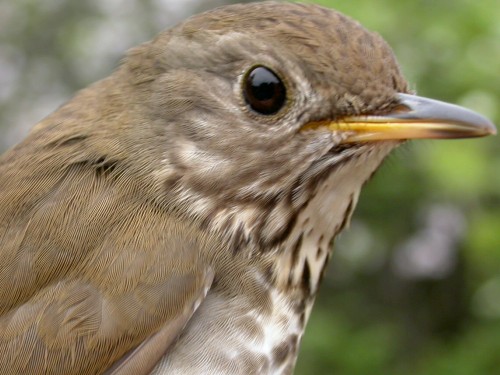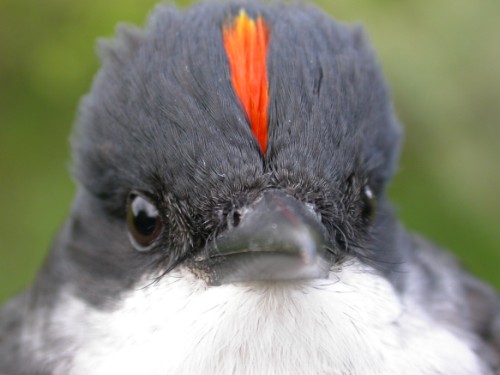|
McGILL BIRD OBSERVATORY |
|||||||||||||||||||||||||||||||||||||||||||||
Welcome to the McGill Bird Observatory weekly report. Click here for a complete listing of our archives. Comments or questions are welcome at mbo@migrationresearch.org.
Bander-in-charge:
Marcel Gahbauer Notes: A much quieter period than last week, due largely to the weather. A remarkably persistent weather system resulted in more than 7 straight days (and nights) of moderate to strong northeast winds, effectively putting a halt to most migration, and also making it hard to operate the nets effectively even for the birds which did make it through. For much of the week the wind was accompanied by rain, but despite that we did manage to squeeze in four mornings of banding, none of which were curtailed too greatly by the rain. The number of birds banded rose daily throughout the week, perhaps reflecting the growing number of birds waiting for decent weather to push north, and beginning to trickle through despite the weather. Again it was a fairly diverse week, with 30 species banded, including another three new for the season and the station as a whole. Unquestionably, the bird of the week (year?) was a probable Bicknell's Thrush, the first bird of Friday morning. Though the species breeds to the north of us in Mont Tremblant, it is rarely observed on migration, so we were quite stunned to see it. Many measurements were taken, all of them fitting within the known range for not only Bicknell's Thrush, but also Grey-cheeked and Veery. Overall though the Bicknell's is the only species for which not only the measurements, but also all the plumage characteristics match up consistently well. Nonetheless, we are checking out additional references, given the variability among known subspecies. For several more photos of this bird, click here. Of course there were plenty of other interesting birds too, including a good number of warblers, our first Northern Rough-winged Swallow, and another half-dozen Baltimore Orioles. New birds for the site observed this week included Marsh Wren and Mourning Warbler, both part of the big wave of migrants that came in on Friday night in time for the Saturday morning census. Some relatively common but late migrants, such as Eastern Wood-Pewee and Swainson's Thrush, have yet to arrive, so we expect that our upcoming final week of Spring Migration Monitoring 2005 will be another busy one.
|


